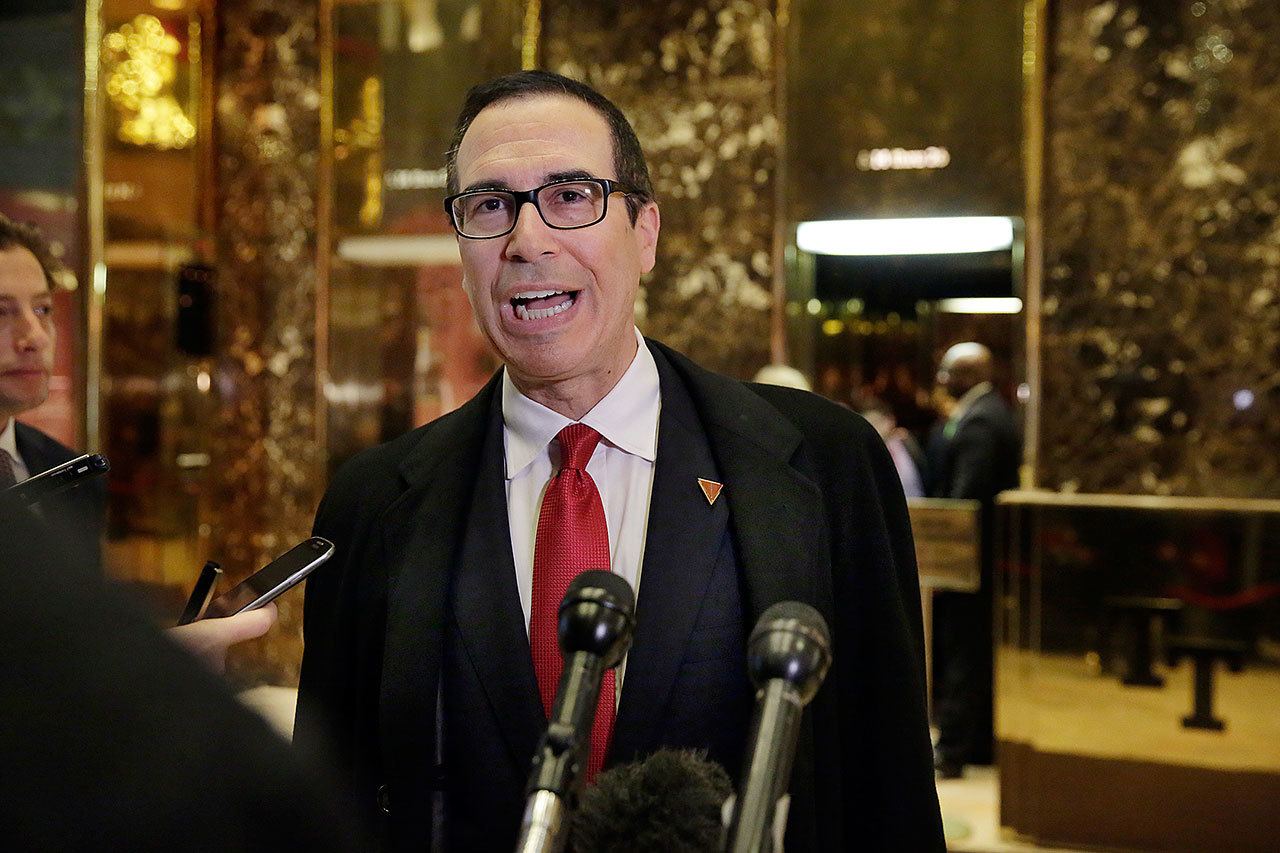News Analysis, By Steven Mufson, The Washington Post
WASHINGTON — The central tenet of President-elect Donald Trump’s plan to speed up the economy sounds fiendishly simple: Cut tax rates and get more tax revenue from faster growth.
To most economists, the proposal is frighteningly familiar. They call it supply-side economics, the theory that encouraged President Reagan to cut taxes so much in 1981 that the government began running huge budget deficits.
George H.W. Bush once dubbed it “voodoo economics.” President Ronald Reagan’s first budget director recently called the concept’s premise “dead wrong.” And one of Reagan’s top economists once knocked the idea that higher revenues would result as “hyperbole.” Even Reagan himself later agreed to a series of modest tax increases to put the government budget on sounder footing.
Trump doesn’t use the phrase supply-side economics, but the formula is what enables him to promise $4.4 trillion in tax cuts over 10 years that he said will not increase federal budget deficits – a result economists overwhelmingly do not believe possible.
“My tax cut is the biggest since Ronald Reagan. I’m very proud of it,” Trump said in his first debate with Hillary Clinton. And in a speech to the New York Economic Club in September, Trump said his planned $4.4 trillion in tax cuts would spur 3.5 to 4 percent growth that would offset rate cuts. “It will be deficit neutral. If we reach 4 percent growth, it will reduce the deficit,” he said.
Trump’s top advisers include champions of supply-side theory. One is Larry Kudlow, the conservative television pundit the president-elect is considering for a key economic advisory role, possibly as chairman of the Council of Economic Advisers.
“I’m a supply sider and there’s no breaking news there,” Kudlow said. “I think growth solves a lot of problems, including budget problems.” He said he considers Trump in the tradition of Reagan and President John F. Kennedy, whose tax cuts Kudlow admires.
Kudlow has said that deep cuts in taxes would put a booster rocket under the economy. On NBC’s “Meet the Press” on Oct. 30, he said Trump’s “tax cuts, particularly [for] businesses and small business … will grow this economy at 4 percent to 5 percent.”
“Larry is a true free-market capitalist – and for that I strongly admire his work,” said David Stockman, who was director of the Office of Management and Budget under Reagan. “But he’s also an incorrigible bull after having spent so many years sniffing financial bubble glue at CNBC.” Wall Street “bulls” are more optimistic than pessimistic “bears.”
Stockman, a former Michigan Republican congressman and onetime divinity student, hired Kudlow, then on Wall Street, to be associate director for economics at OMB at the beginning of the Reagan administration. But in an email, Stockman said that Kudlow “was dead wrong as chief economist at OMB in 1981 when he claimed that big tax cuts would cause an immediate boom and be self-financing.”
Stockman added: “When we raised taxes three times during 1982-1984 to curtail the runaway deficit and the economy still rebounded strongly during those years, he had no answer.”
Yet Kudlow remains undaunted, claiming that the formula can work.
And he isn’t alone. Trump’s pick for treasury secretary, Steven Mnuchin, said that “we can absolutely get to sustained 3 to 4 percent” by imposing “the largest tax change” since Reagan.
Trump’s nominee for commerce secretary, Wilbur Ross, and Peter Navarro, a business professor at the University of California at Irvine, have proposed an infrastructure plan that they say would give investors tax credits and would not cost the government anything. Instead, they explained, new construction and new jobs would generate enough federal receipts that the proposal would achieve “revenue neutrality,” the economic equivalent of a free lunch.
To most economists, including Republicans, that conclusion is hooey.
“Four percent growth is a nice aspiration, but very difficult to achieve,” N. Gregory Mankiw, a Harvard economics professor who chaired the Council of Economic Advisers under President George W. Bush. “In light of the ongoing retirement of the baby-boom generation and the fact that most women are already working, growth in the labor force will likely be much slower in the future than it has been over the past several decades.”
Moreover, he added, unemployment has fallen and “there is not a lot of slack that might otherwise permit faster-than-normal growth.”
In a recent meetings with business leaders, Trump transition advisers have walked back the earlier Trump team forecasts for economic growth, according to a participant in one of the meetings. They now acknowledge that growth might only hit 3 percent.
Mankiw said better tax and regulatory policy could speed up growth, and he cited some reforms House Republicans were mulling. But, he added, “even with sensible pro-growth policies” that over the next decade “even 3 percent long-run growth would be quite an accomplishment.”
It remains unclear what Trump’s new OMB director, Rep. Mick Mulvaney, R-S.C., a deficit hawk, will think of the supply-side formula. But Senate Finance Committee Chairman Orrin Hatch, R-Utah, has acknowledged that Trump’s plan might require larger deficits than GOP lawmakers previously said they would accept.
Kudlow maintained that lower marginal tax rates on capital gains and income, especially for the wealthy, would spur people to work and invest more, so much that tax revenue would increase.
Why the wealthy in particular? “Those people have the most flexibility to work or not work, invest or not invest. Their sensitivity is very high, while in the middle income, not as much,” Kudlow said. Middle-income earners would simply spend more.
Back in the 1980s, supply-side economics was championed by Arthur Laffer, who famously drew the theory on a napkin for White House advisers to President Gerald Ford. Mainstream economists have always acknowledged that there is some supply-side effect on revenue from faster growth when taxes are cut, but not nearly enough to offset the reduction in rates.
“The height of supply side hyperbole was the ‘Laffer curve’ proposition that the tax cut would actually increase tax revenue because it would unleash an enormously depressed supply of effort,” Martin Feldstein wrote in a 1986 paper in the National Bureau of Economic Research. Feldstein, a Harvard economics professor, had been chairman of Reagan’s Council of Economic Advisers from 1982 to 1984.
Feldstein agreed that “the reduction in tax rates did have a favorable effect on work incentives and on real GNP and that the resulting loss of tax revenue was significantly less than the traditional revenue estimates would imply.” But, he added, “the miraculous effects anticipated by some of the new supply side enthusiasts were, alas, without substance.”
At least in 1981, when Reagan and Congress pushed ahead with sharp tax cuts, the loss of revenue was not catastrophic because the U.S. economy had less debt. When Reagan took office, the outstanding national debt was just under $1 trillion, or 31 percent of gross domestic product.
Yet Stockman notes that “35 years later the U.S. economy is fatally hobbled with $64 trillion of public and private debt. It needs fiscal and financial discipline, not supply-side nostrums.” But, he said pointing to Kudlow’s current claims, “Larry still doesn’t know he was wrong the first time.”
Talk to us
> Give us your news tips.
> Send us a letter to the editor.
> More Herald contact information.

























